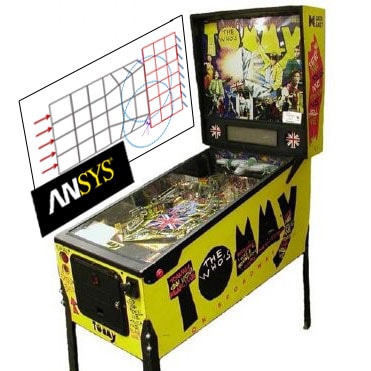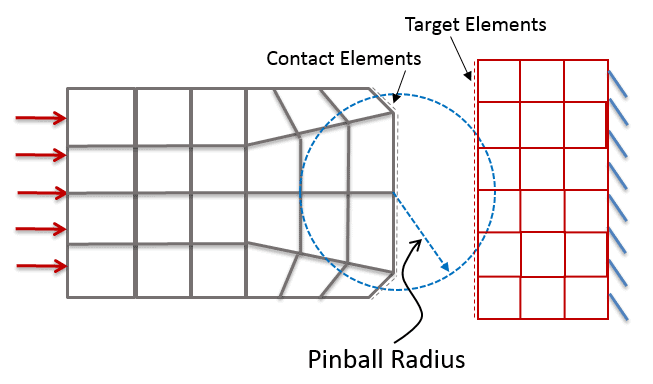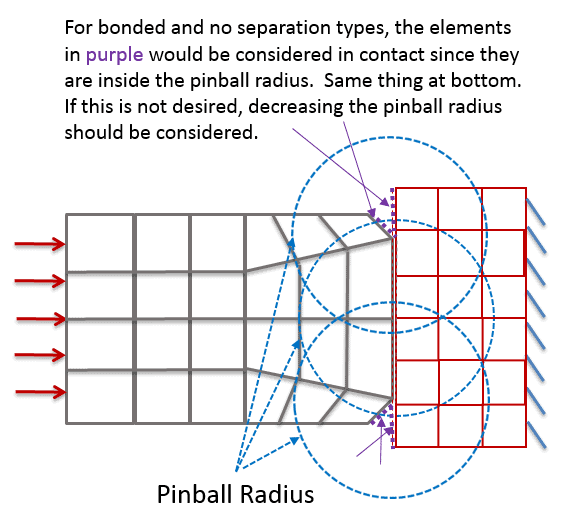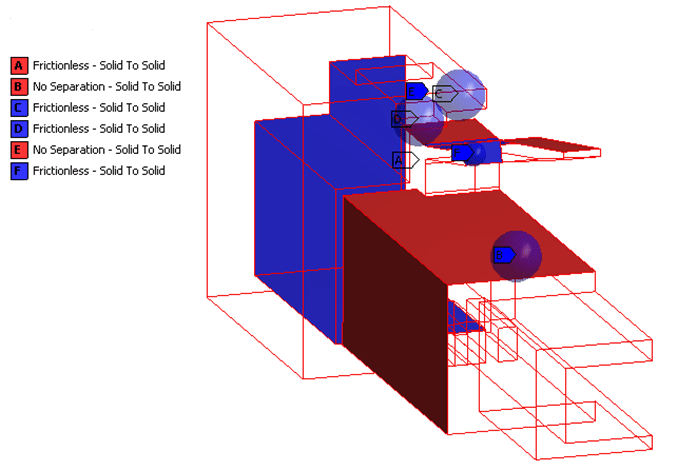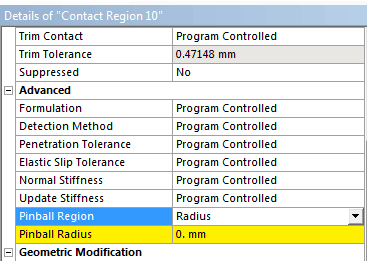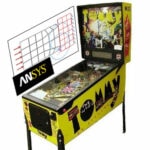
I had a very cool music teacher back in 6th or 7th grade in the 1970’s in upstate New York. Today we’d probably say she was eclectic. In that class we listened to and discussed fairly recent songs in addition to general music studies. Two songs I remember in particular are ‘Hurdy Gurdy Man’ by Donovan and ‘Pinball Wizard’ by The Who. If you’re not familiar with Pinball Wizard, it’s from The Who’s rock opera Tommy, and is about a deaf, mute, blind young man who happens to be adept at the game of pinball. Yes, he is a Pinball Wizard. This sing popped into my head recently when we had some customer questions here at PADT regarding the pinball region concept as it pertains to ANSYS contact regions.
I’m not sure if the developers at ANSYS, Inc. had this song in mind when they came up with the nomenclature for the 17X (latest and greatest) series of contact elements in ANSYS, but regardless, you too can be a pinball wizard when it comes to understanding contact elements in ANSYS Mechanical and MAPDL.
Fans of this blog may remember one of my prior posts on contact regions in ANSYS that also had a musical theme (bringing to mind Peter Gabriel’s song “I Have the Touch”):
In this current entry we will go more in depth on the pinball region, also known as the pinball radius. The pinball region is involved with the distance from contact element to target element in a given contact region. Outside the pinball region, ANSYS doesn’t bother to check to see if the elements on opposite sides of the contact region are touching or not. The program assumes they are far away from each other and doesn’t worry about any additional calculations for the most part.
Here is an illustration. The gray elements on the left represent the contact body and the red elements on the right represent the target body (assuming asymmetric contact). Target elements outside the pinball radius will not be checked for contact. The contact and target elements actually ‘coat’ the underlying solid elements so they are shown as dashed lines slightly offset from the solid elements for the sake of visibility. Here the pinball radius is displayed as a dashed blue circle, centered on the contact elements, with a radius of 2X the depth of the underlying solid elements.
So, outside the pinball region, we know ANSYS doesn’t check to see if the contact and target are actually in contact. It just assumes they are far away and not in contact. What about what happens if the contact and target are inside the pinball region? The answer to that question depends on which contact type we have selected.
For frictionless contact (aka standard contact in MAPDL) and frictional contact, the program will then check to see if the contact and target are truly touching. If they are touching, the program will check to see if they are sliding or possibly separating. If they are touching and penetrating, the program will check to see if the penetration exceeds the allowable amount and will make adjustments, etc. In other words, for frictionless and frictional contact, if the contact and target elements are close enough to be inside the pinball region, the program will make all sorts of checks and adjustments to make sure the contact behavior is adequately captured.
The other scenario is for bonded and no separation contact. With these contact types, the program’s behavior when the contact and target elements are within the pinball region is different. For these types, as long as the contact and target are close enough to be within the pinball region, the program considers the contact region to be closed. So, for bonded and no separation, your contact and target elements do not need to be line on line touching in order for contact to be recognized. The contact and target pairs just need to be inside the pinball region. This can be good, in that it allows for some ‘slop’ in the geometry to be automatically ignored, but it also can have a downside if we have a curved surface touching a flat surface for example. In that case, more of the curved surface may be considered in contact than would be the case if the pinball region was smaller. This effect is shown in the image below. Reducing the pinball radius to an appropriate smaller amount would be the fix for eliminating this ‘overconstraint’ if desired.
There is a default value for the pinball region/radius. It can be changed if needed. We’ll add more details in a moment. First, why is it called the “pinball” region? I like to think it’s because when it’s visualized in the Mechanical window, it looks like a blue pinball from an actual pinball arcade game, but I’ll admit that the ANSYS terminology may predate the Mechanical interface. The image below shows what I mean. The blue balls are the different pinball radii for different contact regions.
Note that you don’t see the pinball region displayed as shown in the above image unless you have manually changed the pinball size in Mechanical. The pinball region can be changed in the Mechanical window in the details view for each contact region by changing Pinball Region from Program Controlled to Radius, like this:
In MAPDL, the pinball radius value can be changed by defining or editing the real constant labeled PINB.
By now you’re probably wondering what is the default value for the pinball radius? The good news is that it is intelligently decided by the program for each contact region. The default is always a scale factor on the depth of the underlying elements of each contact region. In the first pinball region image shown near the beginning of this article, the example plot shows the pinball region/radius as two times the depth of the underlying elements.
The table below summarizes the default pinball radius values for most circumstances for 2D and 3D solid element models. More detailed information is available in the ANSYS Help.
[table id=2 /]
Summing it all up: we have seen how the default values are calculated and also how to change them. We have seen what they look like as blue balls in a plot of contact regions in Mechanical if the pinball radius has been explicitly defined. We also discussed what the pinball radius does and how it’s different for frictionless/frictional contact and bonded/no separation contact.
You should be well on your way to becoming a pinball wizard at this point.
Does performing simulation in ANSYS make you think of certain songs, or are there songs you like to listen to while working away on your simulations an addition to The Who’s “Pinball Wizard” and Peter Gabriel’s “I Have the Touch”? If so, we’d love to hear about your song preferences in the comments below.

